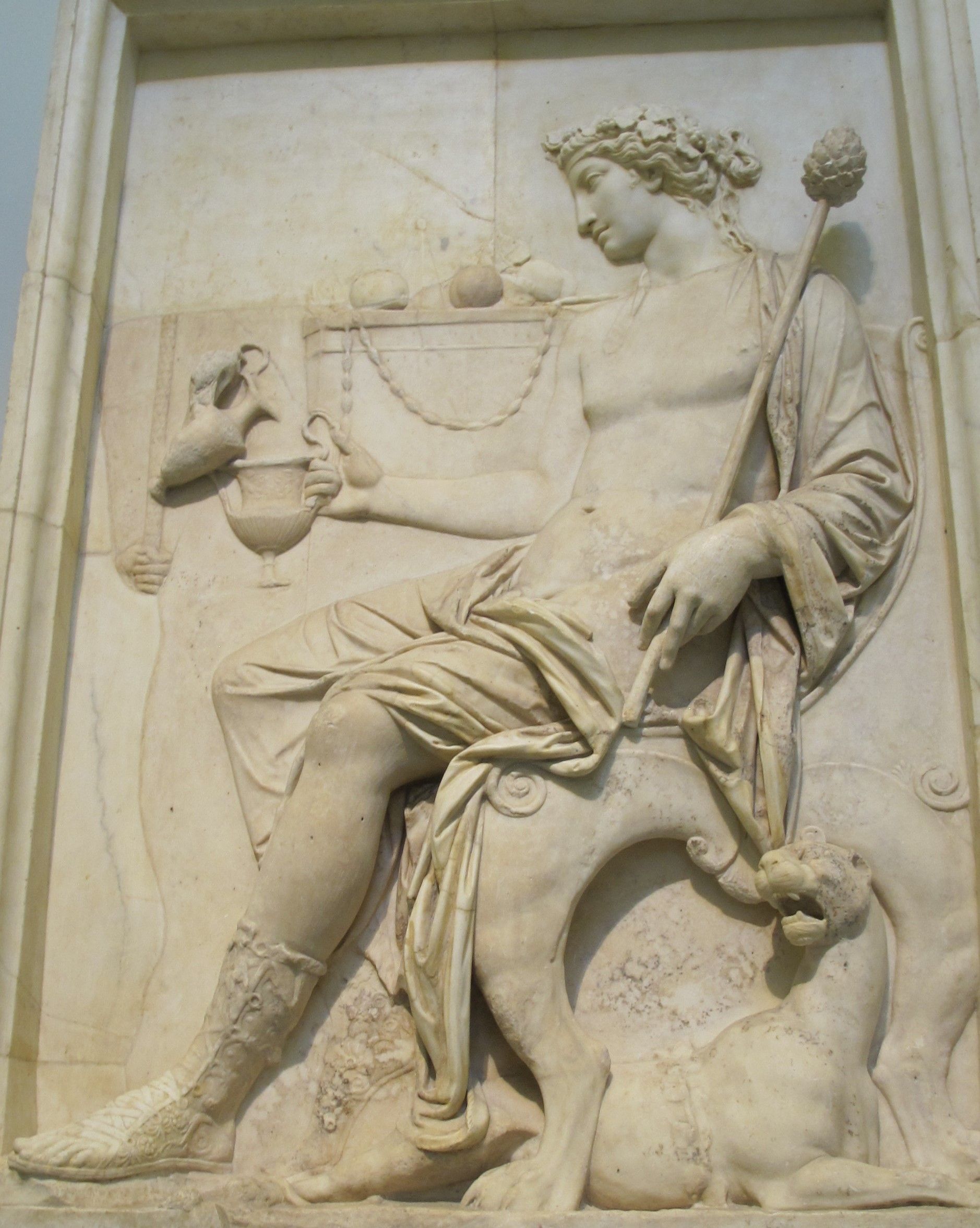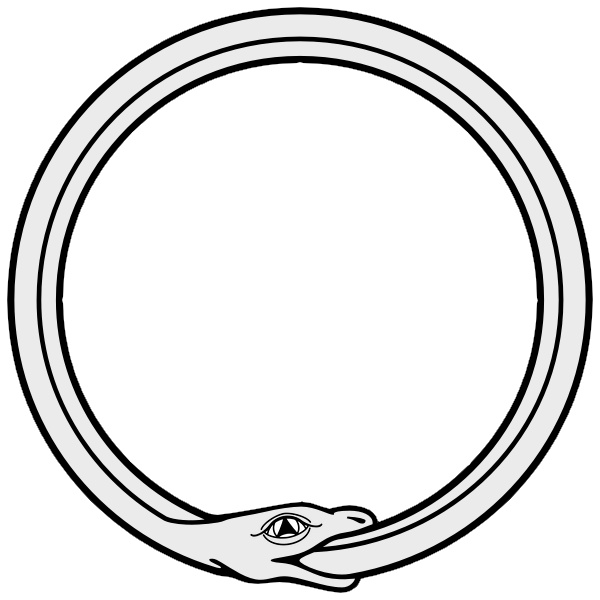Villa Chiodini:
Dead Men Walking
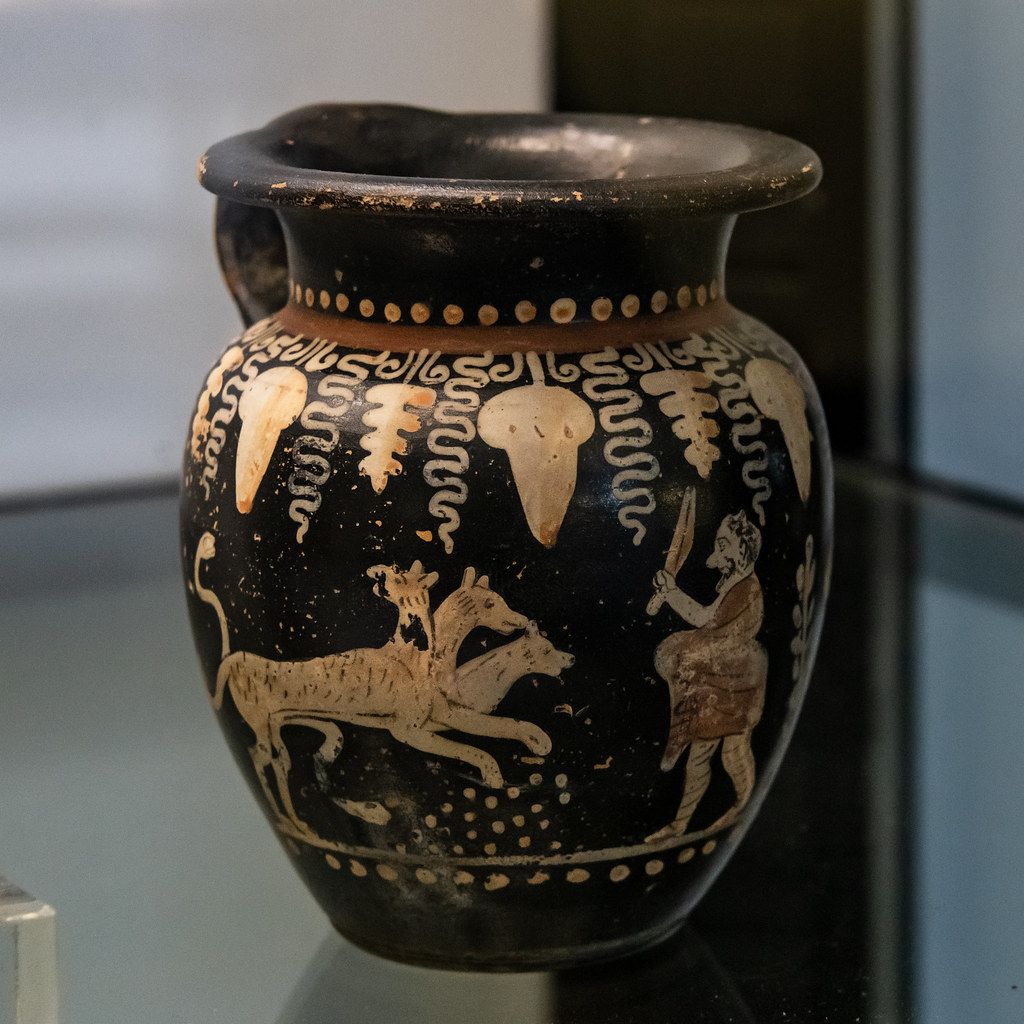
Ampule with a three-headed dog (Cerberus) and a pot-bellied figure with a club (Hercules), Greek, 400 B.C. - 299 B.C., clay, Chiodini Collection Santa Obscura University, Photograph by Elizabeth Gray.
The Chiodini Collection is the largest public collection of Greco-Roman and Mediterranean artifacts outside of a museum in the United States. It showcases hundreds of unique and evocative pieces of ancient pottery, statuary, wall paintings, mosaics, and various other rare finds that make this exhibition one of Santa Obscura’s crowning jewels.
The collection introduces visitors to the cultural and archaeological contexts of the wide net of Ancient Mediterranean cultures, ranging from Greece to Italy, Turkey, Egypt, and Ethiopia. Nearly ninety percent of the objects in house focus on a singular theme that Giacomo Chiodini, the posthumous donor of the collection, was fascinated by for most of his life: the underworld and its divine inhabitants. These chthonic (underworld) gods were more than just bogeymen and a pantheon of black sheep; their cults were shrouded in great secrecy, and though rarely worshipped publicly, were often even more respected (or perhaps, feared) than the gods of Mt. Olympus. Witness the multiform aspects of these gods as they spread from coast to coast, manifesting in unique but familiar shapes as they integrated themselves into dozens of separate cultural mythologies. The Chiodini Collection serves as a solemn reminder that death need not be a kingdom of fear and darkness, but can also serve as a homecoming, and those who exist beyond the veil await us all with open arms.
Exhibition Gallery

Ampule with a three-headed dog (Cerberus) and a pot-bellied figure with a club (Hercules), Greek, 400 B.C. - 299 B.C., clay, Chiodini Collection Santa Obscura University, Photograph by Elizabeth Gray.
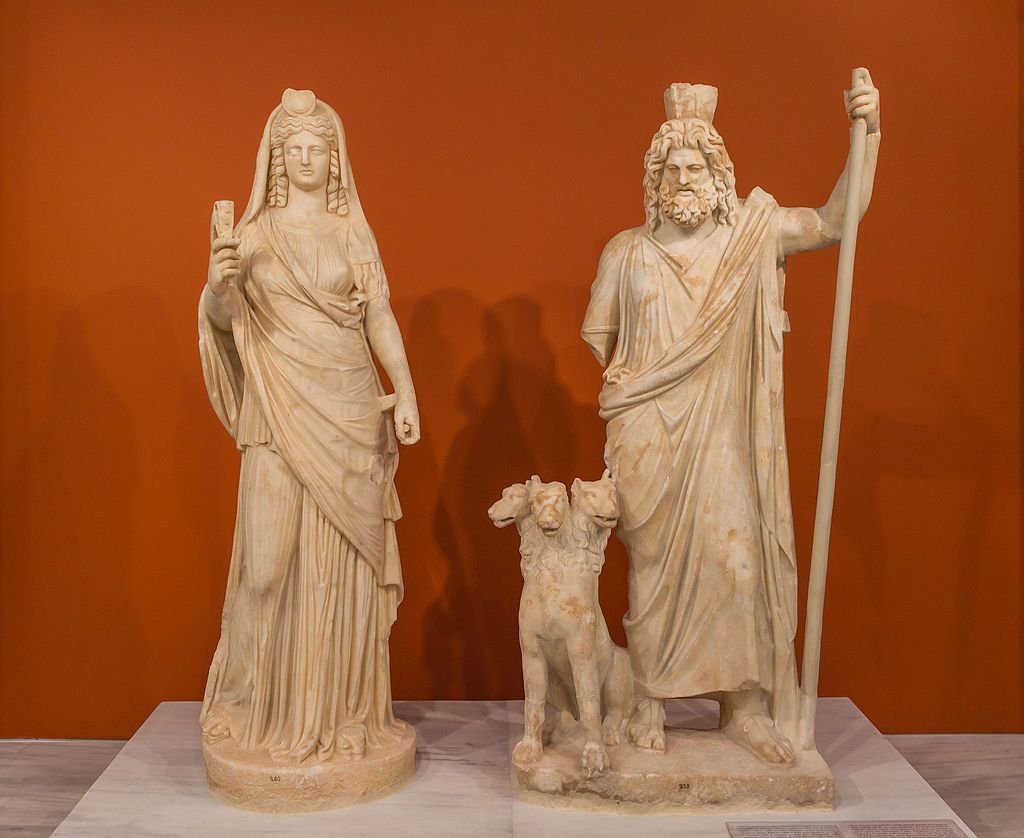
Statue group of Persephone (as Isis), Pluto (as Serapis) and the three-headed dog Cerberus, Greek, 200 B.C., marble, Chiodini Collection Santa Obscura University, Photograph by Elizabeth Gray.
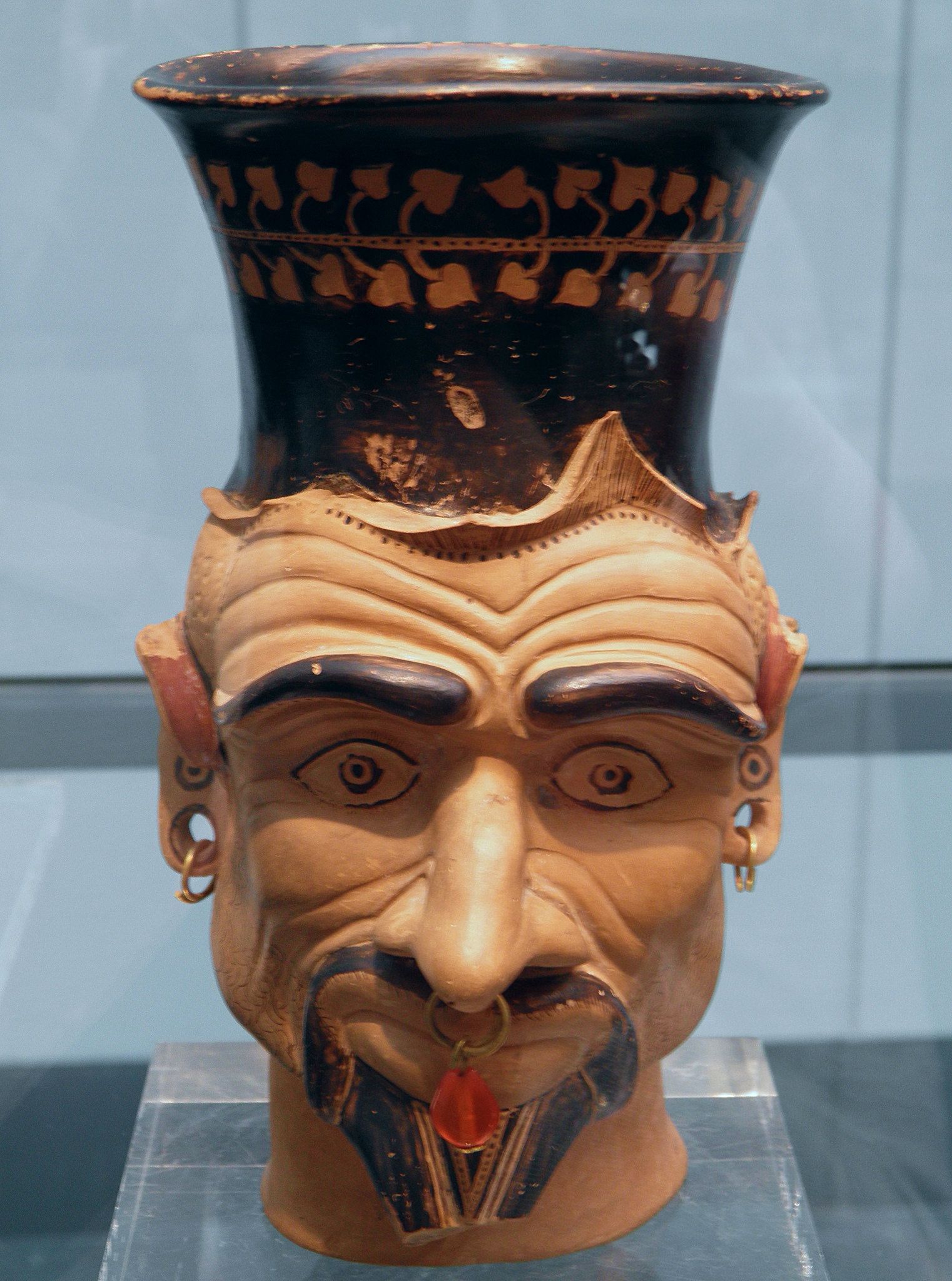
Rhyton in the form of Charun (Charon), Etruscan, 500 B.C., clay, Chiodini Collection Santa Obscura University, Photograph by Elizabeth Gray.

Statue of Asclepius, god of medicine, Roman copy of Greek original, 200 B.C., marble and plaster, Chiodini Collection Santa Obscura University, Photograph by Elizabeth Gray.
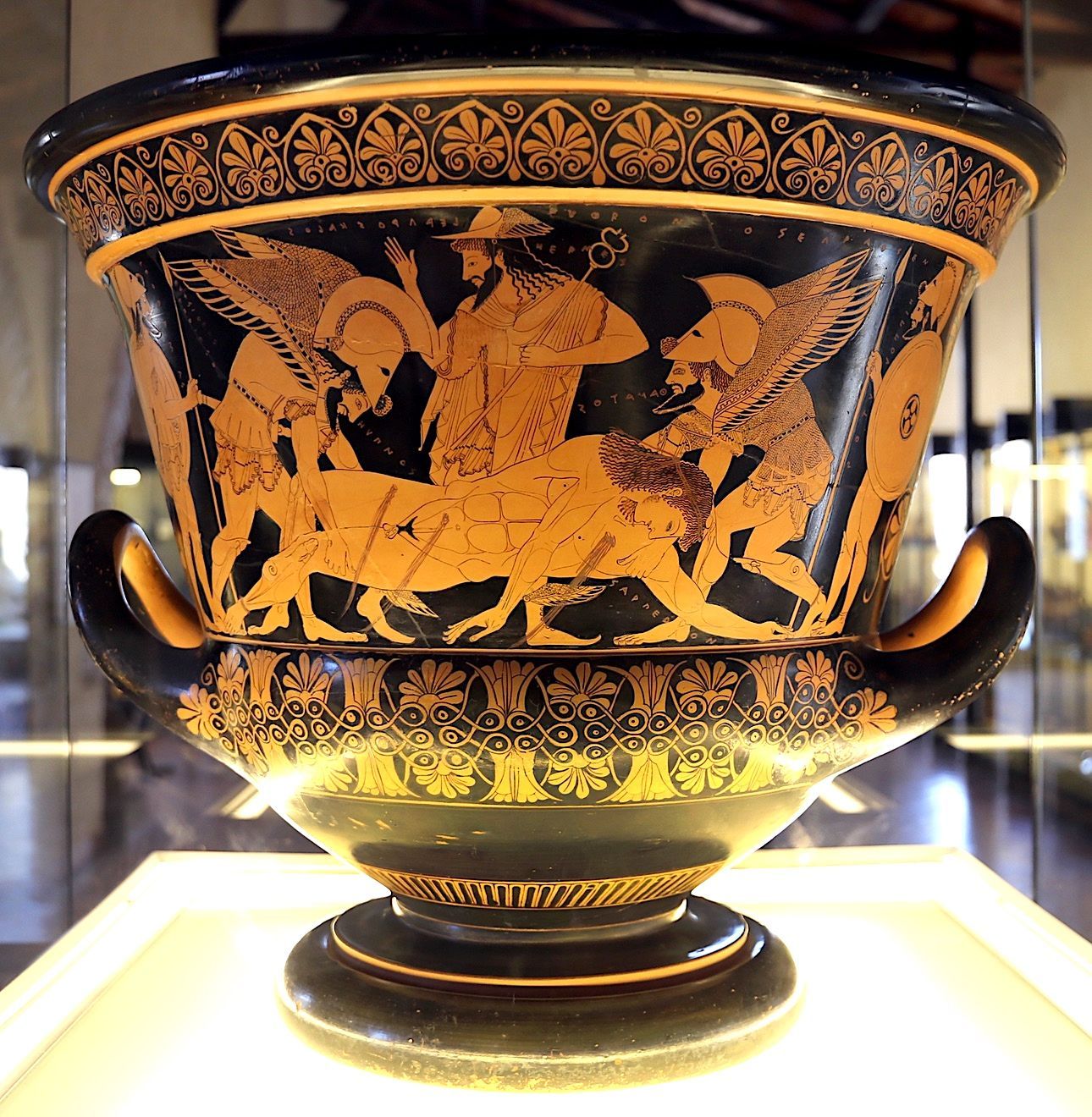
Red-figure calyx-krater depicting Hypnos (left) and Thanatos (right) carrying the body of Sarpedon (below) before Hermes (above), Greek, 515 B.C.- 510 B.C., clay, Chiodini Collection Santa Obscura University, Photograph by Elizabeth Gray.
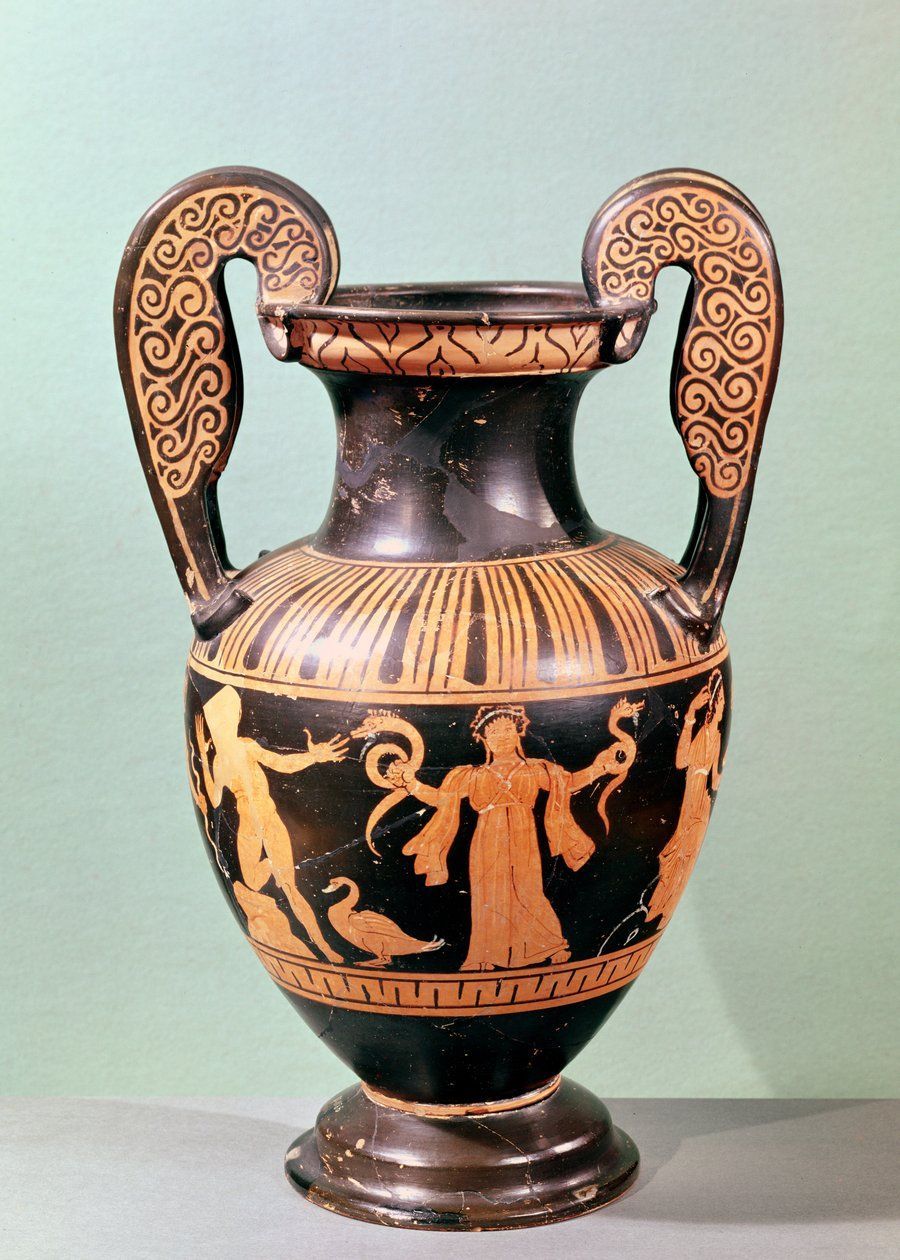
Red-figure krater depicting Orestes being pursued by the Erinyes (Furies), Etruscan, 330 B.C., clay, Chiodini Collection Santa Obscura University, Photograph by Elizabeth Gray.
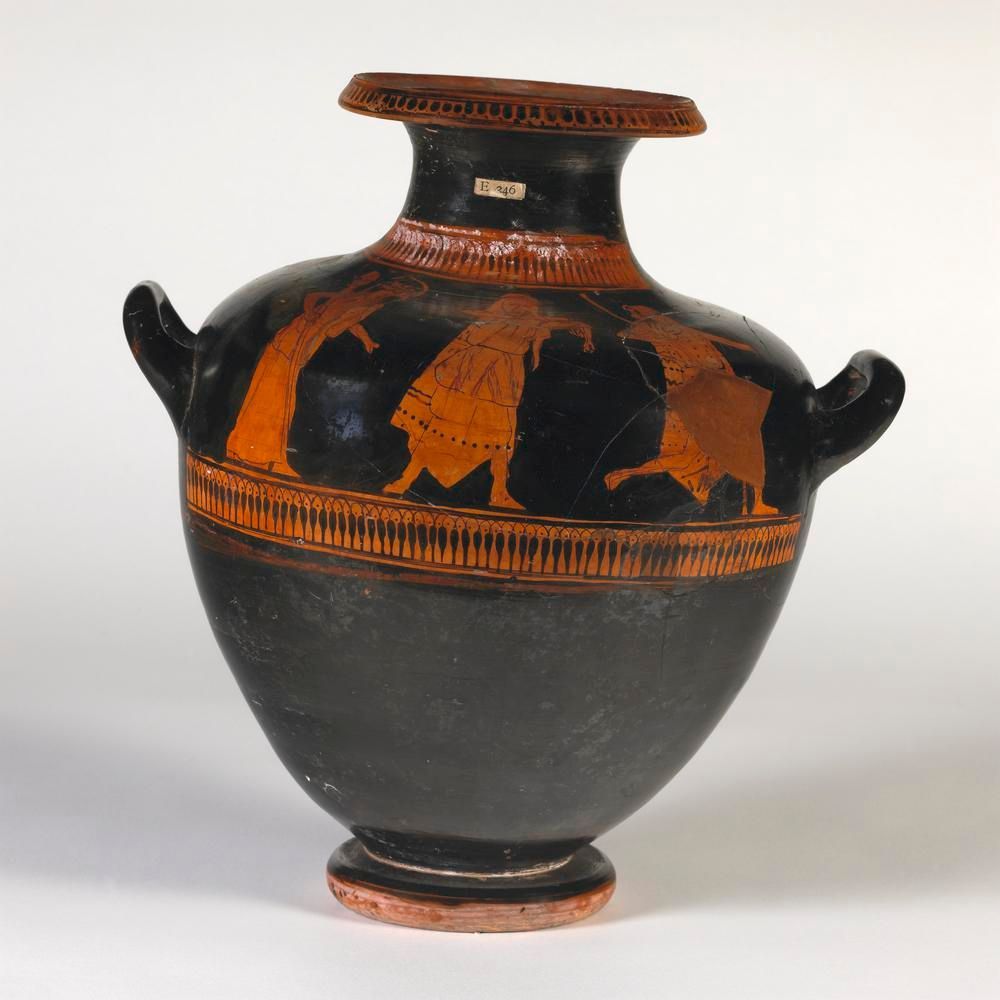
Red figure hydria depicting Zargreus (center) being devoured by Titans (center and left) as Dionysus (right) watches in horror, Greek, 480 B.C. - 450 B.C., clay, Chiodini Collection Santa Obscura University, Photograph by Elizabeth Gray.
Relief depicting Bacchus (Dionysus), Roman, 100 A.D., marble, Chiodini Collection Santa Obscura University, Photograph by Elizabeth Gray.
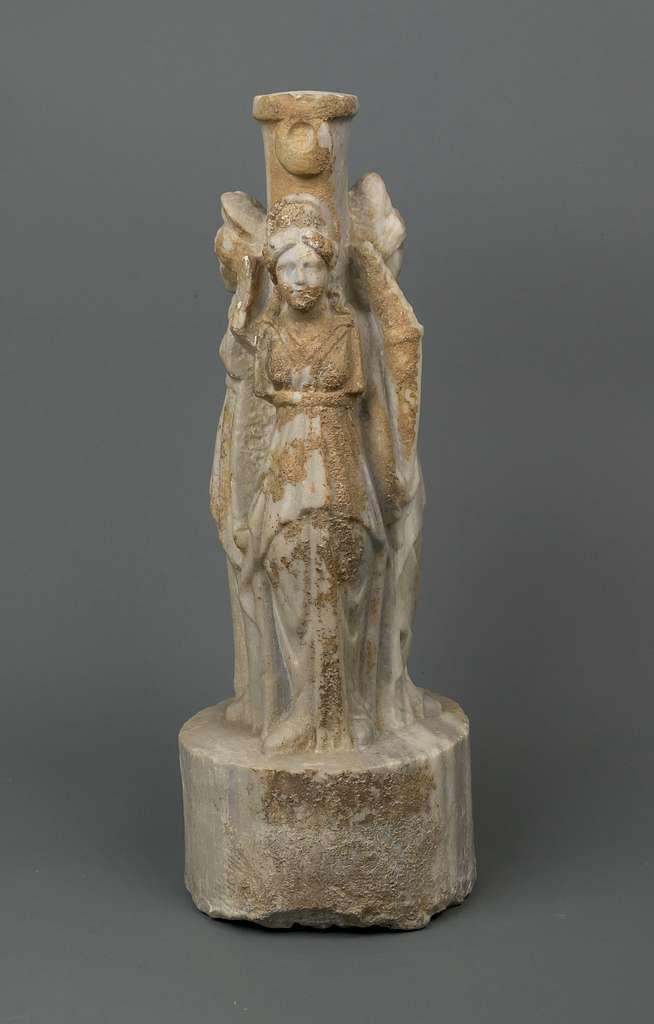
Hekataion depicting three-figured Hecate, Roman, 110 A.D., marble, Chiodini Collection Santa Obscura University, Photograph by Elizabeth Gray.


